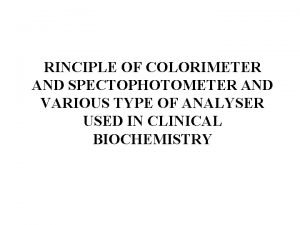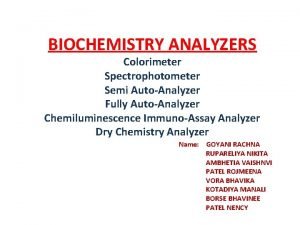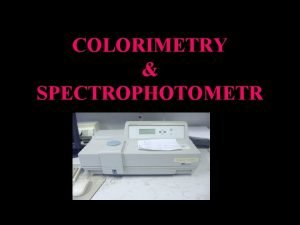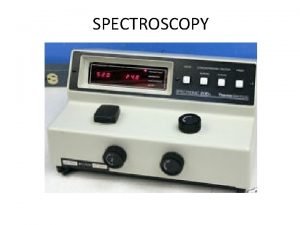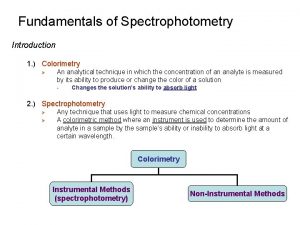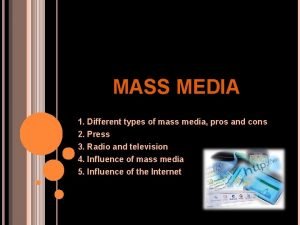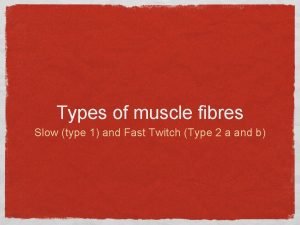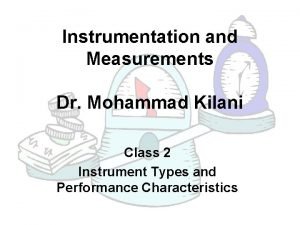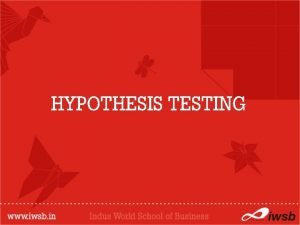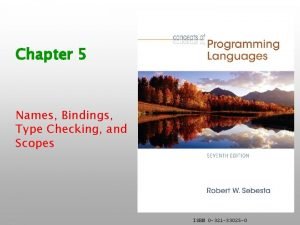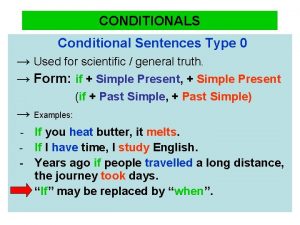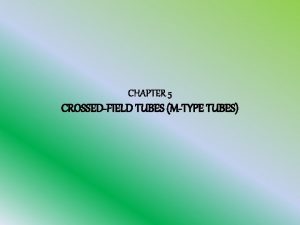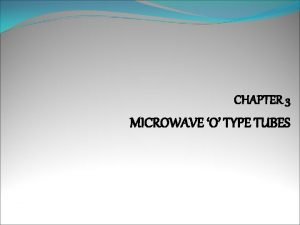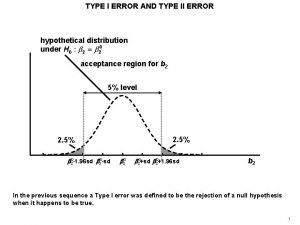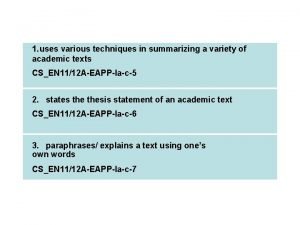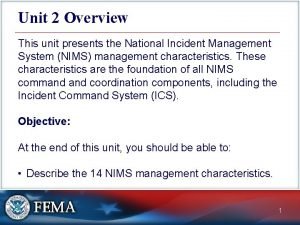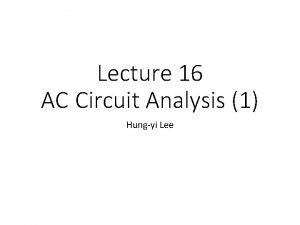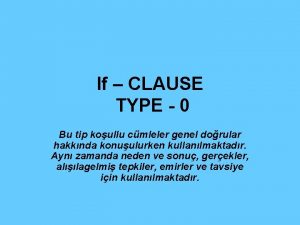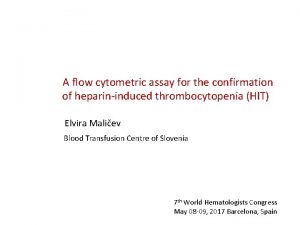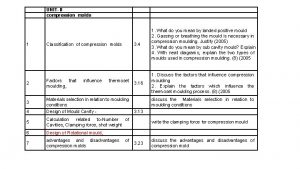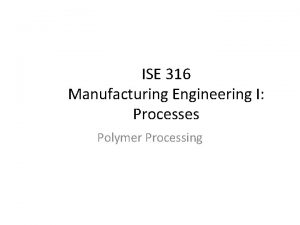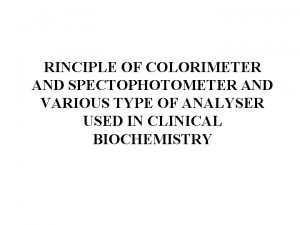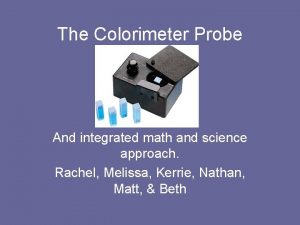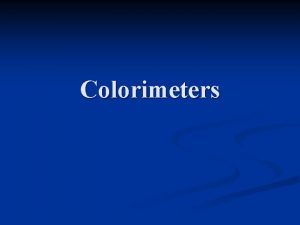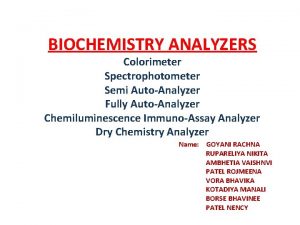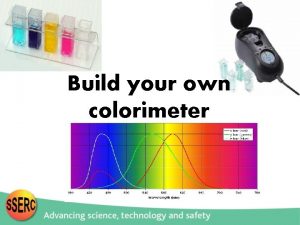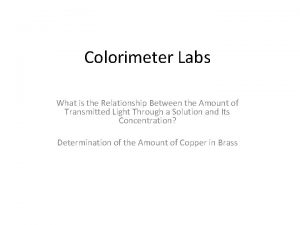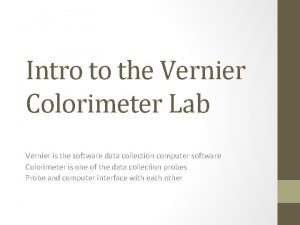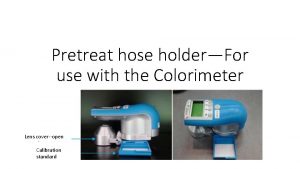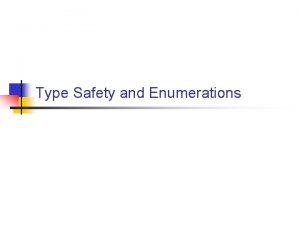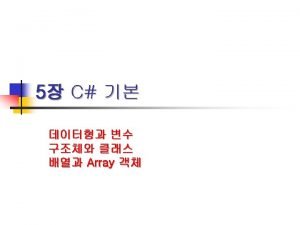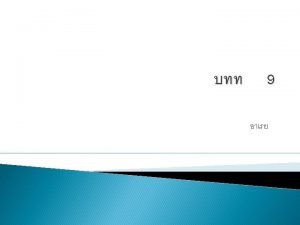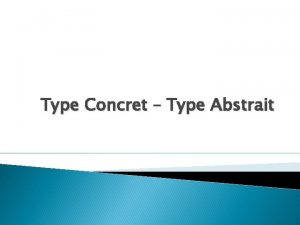RINCIPLE OF COLORIMETER AND SPECTOPHOTOMETER AND VARIOUS TYPE



































- Slides: 35

RINCIPLE OF COLORIMETER AND SPECTOPHOTOMETER AND VARIOUS TYPE OF ANALYSER USED IN CLINICAL BIOCHEMISTRY

COLORIMETER • What is colorimeter ? • Colorimetry. • Principle of colorimeter. • Beer's and Lambert's law. • Components of colorimeter. • Functions of components. • Advantages and Disadvantages of single cell photometry.

What is colorimeter ? meter is a instrument used for the measurement of ed substance in solution. nstrument is operative in the visible range of the magnetic spectrum.

COLORIMETRY • It is a most common analytical technique used in biochemical estimation in clinical laboratory. • It involves the quantitative estimation of colour. • A substrate must be estimated colorimetrically, must be coloured or it should be capable of forming chromogens (coloured complexes) through the addition of reagents.

• Coloured substance absorb light in relation to their colour density. • The colour density will be proportional to the concentration of coloured substance. • The instruments used in this method are called colorimeter or photometer.

PRINCIPLE OF COLORIMETER • When a monochromatic light passes through a coloured solution, some specific wavelength of light is absorbed which is related to colour density. • The amount of light absorbed or transmitted by a colour solution is accordance with two law, i. e. Beer’s law and Lambert’s law.

COMPONENT OF COLORIMETER Light source Slit Monochromator(filter) Cuvette Photocell Galvanometer



FUNCTION OF EACH COMPONANT Light source Two kinds of lamp: - 1. Halogen Deuterium : - for measurement in the ultraviolet range 200 – 900 nm. 2. Tungsten lamp: - for measurement in the visible 400 – 760 nm and near-infrared ranges.

MONOCHROMATOR(FILTER) : FILTER: • Used for selecting the monochromatic light. • Filters will absorb light of unwanted wavelength and allow only monochromatic light to pass through. Three Types: 1. Prism 2. Grating

PRISM • When light travels from one medium to another medium , it is refracted and enters in the new medium at a different angle.

Prism wavelength spectrum

GLASS FILTER: • Glass filters are selectively transmit particular range of wavelength. light in

GRATINGS : • GRAPHITE • Light (Tungsten light) is reflected on graphite. This graft separate light in different wave length. By rotation of slit, desirable wave length of light come out from slit. And Beam of that wave length is generated. • Desired wavelength selected by the adjustment of an exit slit.

CUVETTE (Sample cell ): As per lambert – beer's law path length is fixed to 1 cm. Sample cell has 1 cm diameter. A container that contains a sample is usually called cell.

THREE TYPES OF CELL: 1. Glass • 340 nm wavelength of light absorbed in glass cell. • cheap

2. Quartz It allows passage both type of light, ultraviolet & visible ranges. • So used for measurement of both ranges. costly. • 3. Plastic cuvette • Shorter Life Span • Easily get Scratches • Low Cost

PHOTOCELL (PHOTODETECTOR) • These are the devices to measure the intensity of light by converting light energy in to electric energy. • They are made up of light sensitive material such as selenium. GALVANOMETER • Readout device. • A galvanometer is used to detect and measure electrical current produced by the photodetector.

ADVANTAGE: • It is very easy to operate. DISADVANTAGES: • Less sensitive. • Limited range of filters are available. • If the light source is not stable , there is a possibility of errors due to a change from the initial light intensity during a measurement. • The manual operation are limited.

Spectrophotometer


Principle The working of colorimeter & Spectrometers is based on Beer's & Lambert's law. Beer's Law: -It states that the optical density of a solution is directly proportional to the concentration of the solution. Lambert's law: -It states that the optical density of a coloured solution is directly proportional to the path of light.

According to Beer's & Lambert's law where, T=10 -kc. L, T=transmittance K=Constant characteristic of the solution C=concentration of the coloured solution L=Path of light through the coloured solution O. D. =2 – log T%

Differences: Colorimeter & Spectrophotometer Colorimeter Limited for the visible portion of spectrum (visible light) Cheap Two digit reading after desimal point. Less sensitive Glass are used. Spectrophotometer Ultra violet & infrared region also visible e. g. 340 nm Very costly Four digits reading after desimal point. More sensitive Prism are used.

Glass cuvette or test Quartz cuvette is used tube is used for reading which does not absorb which absorb 340 nm light. Halogen lamps are used. Tungsten lamps are used. Can use specific filter. Can’t use specific filter. • Can do kinetic method. Can’t do kinetic method.

Auto analyzers are mainly two types: • Semi Auto Analyzer • Fully Auto Analyzer

Semi Auto Analyzer Example : ERBA CHEM 5 - PLUS Advantage : Displaying the test results Printing & memorizing these results Graphs of all linear & nonlinear reactions. Disadvantage : initial stage of Analysis are performed manually Pipetting of reagent Pipetting of specimen Mixing & incubation. This instrument require minimum 500 microliters of reagent for test. Manual L-J chart to draw




Fully Auto Analyzer The auto analyzer perform all the function of semi auto analyzer. 1. Automatic dispensing of reagent (by reagent probe). 2. Automatic dispensing of samples. 3. Automatic mixing of reaction mixtures. 4. Incubating of reacting mixture.

Advantages: - Many samples with different parameter can analyzed at time. Good precision Less reagent required. Less sample required. Less man power required. Maintain the temperature For Sample & For Reagent For incubation period. Can stored result in memory. It have facility to accommodate various samples, standards, calibrations & Q. C. Sera. • Automated L-J Chart is visible • Programmable wash cycles between samples & tests for minimum carry over. • Auto dilution is also possible • • •

Two types of fully auto analyzer: Batch analyzer Random analyzer

Random Access analyzer - Perform Any number of Parameter from any number of sample. - More sample in the short period of time. Facility of continuous loading of sample Facility of “stat” analysis - Urgent sample. Facility of autodilution. Plotting of daily & monthly Q. C. Chart (L-Jchart). Capability to perform a test with 2 to 3 reagents. Some of the analyzer has separate assembly to wash cuvette so very less chance of contamination. Example : ERBA XL 640
 Spectophotometer
Spectophotometer Types of auto analyzer
Types of auto analyzer Colorimetry experiments
Colorimetry experiments Beer lambert law
Beer lambert law Application of colorimeter
Application of colorimeter Types of mass
Types of mass Type 1 and type 2 muscle fibres
Type 1 and type 2 muscle fibres Type 1 error vs type 2 error example
Type 1 error vs type 2 error example Type a and type b personality theory
Type a and type b personality theory Rorschach test answers
Rorschach test answers Null type and deflection type instruments
Null type and deflection type instruments Difference between type 1 and type 2 error
Difference between type 1 and type 2 error Static and dynamic type checking in compiler design
Static and dynamic type checking in compiler design Blood type offspring
Blood type offspring Blood type and body type
Blood type and body type Name type compatibility and structure type compatibility
Name type compatibility and structure type compatibility Type 0 type 1 conditional
Type 0 type 1 conditional M type microwave tubes
M type microwave tubes Difference between o type and m type tubes
Difference between o type and m type tubes Reference type and value type
Reference type and value type Type 2 error
Type 2 error Groundnut variety
Groundnut variety Contrived experiences means
Contrived experiences means Techniques of summarizing
Techniques of summarizing Nims management characteristics
Nims management characteristics Impedence triangle
Impedence triangle Is hyper v type 1 or type 2
Is hyper v type 1 or type 2 Type 2 vs type 1 error
Type 2 vs type 1 error Rock cycle
Rock cycle Myotonic dystrophy.
Myotonic dystrophy. If clause type 0 10 tane cümle
If clause type 0 10 tane cümle Null hypothesis biology
Null hypothesis biology Type 1 vs type 2 fibers
Type 1 vs type 2 fibers Type 2 hit
Type 2 hit Bulk factor in compression moulding
Bulk factor in compression moulding Pot type mold & plunger type mold are the classification of
Pot type mold & plunger type mold are the classification of
